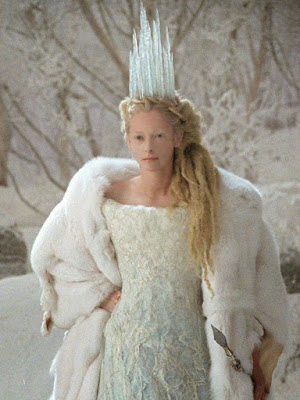Copyright 2018 by Gary L. Pullman
According to
communications professor Jib Fowles
(and psychologist Henry Murray), the need for guidance is universal;
everyone experiences it, male and female, young and old—everyone.
In promoting their clients' products, advertisements use this basic
need, one of the fifteen
identified by Fowles, to appeal to potential customers. Since
these needs are universal, they pop up, quite frequently, in fiction
of all types, including that of the horror genre.
In Buffy the Vampire Slayer, guidance is provided by two major sources: Buffy's high school's library, a repository of a surprising number of books concerning the paranormal, supernatural, and occult, and her mentor, the Watcher Rupert Giles, himself a human repository of all things metaphysical and mystical. Although the Hellmouth, rather than the Sunnydale High School library, is the plot generator for much of the series, the library's books are often the means of explaining, if not always understanding, the threats the protagonist and her friends face each week.
In Supernatural, the plot generator, the notebook of demon hunters Sam and Dean Winchester's father, John, is also the source of the series's appeal to the need for guidance. Often absent, as he pursues demons and other things that go bump in the night on his own, John later sacrifices his life on behalf of Sam and is killed by the greatest adversary among the demons and other supernatural entities he's hunted. However, his notebook remains a source of knowledge about such threats, often not only describing their origin and nature, but also explaining how to eliminate them. After John's death, his friend, Bobby Singer, himself an experienced demon hunter in his own right, steps in, occasionally, as another source of guidance for the Winchester brothers.
As D. H. Lawrence suggests in his poem “The Snake,” one's culture and education are also “voices” that provide guidance. However, the guidance they provide may not always serve one as well as might be supposed. Such guidance may insist that natural and unconscious sources of wisdom and experience be “killed” as mysterious and potentially dangerous forces (represented, in Lawrence's poem, by the snake). Religion, mythology, philosophy, literature, and, more recently, some forms of psychology, such as Freudian and Jungian psychoanalysis, are often suggested (although not in “The Snake”) as means of ascertaining, interpreting, and applying such mystical or metaphysical wisdom. The key is that the irrational or the natural must be interpreted in rational terms, often by a trusted intermediary, such as a priest, a philosopher, a poet, or a psychoanalyst. Often, this is the task assigned, in fantasy, to the source of guidance upon which the characters depend.
In horror fiction that includes a science fiction context, the source of guidance is likely to be scientists or researchers. This situation is especially true in regard to the science fiction-horror movies of the 1950s, such as Them!, The Thing from Another World, The Giant Behemoth, The Trollenberg Terror (also known as The Crawling Eye), and The Monolith Monsters, to name a few.
In Them! myrmecologists dispatched by the U. S. Department of Agriculture determine that the giant ants attacking people near Alamagordo, new Mexico, are mutants produced by atomic bomb radiation.
The thing from another world, a biped, appears to be an animal, but scientists examining the tissue from one of its severed arms reveal that the organism is actually a plant.
Scientists determine that the “behemoth” that ravages the greater London metropolitan area was spawned, as it were, by radiation resulting from atomic testing (a major theme of these films) and provide guidance concerning how to kill the creature: subject it to even more radiation to expedite its demise (the creature, the scientists have found, is dying from radiation poisoning).
An astronomer at the Trollenberg observatory explains that mysterious deaths in the vicinity may be connected to an immobile, radioactive cloud hanging over the south face of Switzerland's Mount Trollenberg. Although the cloud, which later moves and splits into four smaller versions of itself, isn't explained in the movie, film critic Leonard Maltin reveals that it's a cloaking device of sorts, which conceals the film's true menaces, “alien invaders.”
After discovering a catatonic girl alive beneath the rubble of her family's farmhouse, doctors determine that she is slowly turning to stone. If the source of her contagion can be discovered, they may be able to save her life. A professor identifies a sample of the stone as having come from a meteorite. The stone is found to have the property of draining silicon from anything it touches. In humans, silicon maintains tissue flexibility. Without it, the girl's body is turning to stone, so she is injected with the element. Researchers discover that the salt in the solution administered to the girl stopped the stone from extracting silicon from her tissues, so a dam is dynamited, allowing local salt flats to be flooded, thereby saving the day for humanity.
Whether the source of guidance is mystical or scientific, horror fiction, whether on the page or the sound stage, often appeals to the need for guidance universal among all human beings. Like other appeals to the fifteen basic needs identified by Fowles, the need for guidance is one of interest to all readers and audiences.


































